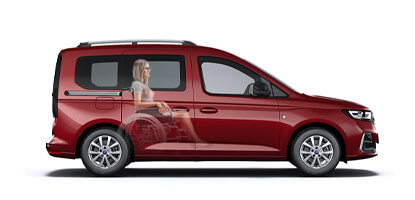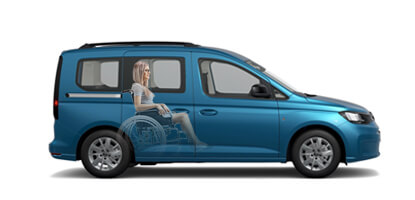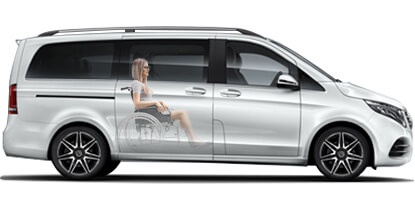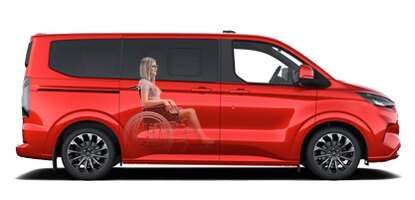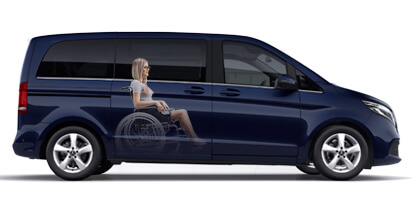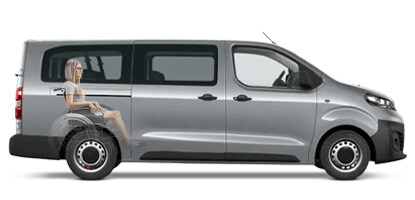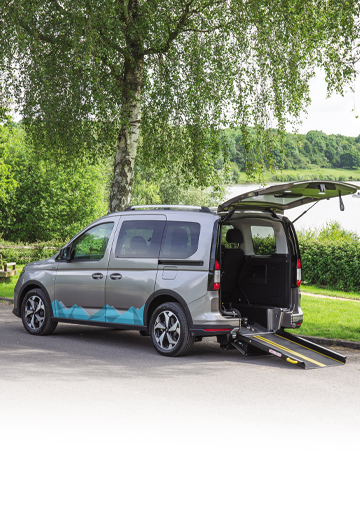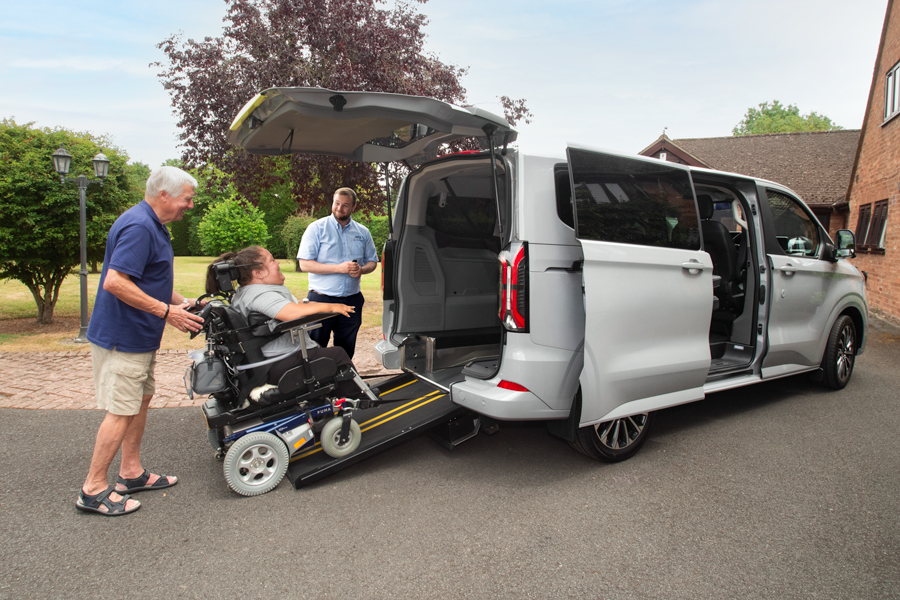If you’re searching for a new Wheelchair Accessible Vehicle (WAV), one crucial aspect to consider is the ‘Seated Height’ of the wheelchair user.
Why is Seated Height Important?
Measuring the height of the wheelchair user will determine how much Entry Height and Internal Headroom you’ll required in your new WAV, as well as how much Outward Visibility the wheelchair user enjoys. So it’s important to measure this as accurately as possible – especially if you use more than one wheelchair to travel.
Before You Measure
To accurately measure the wheelchair user’s seated height, we recommend you start on a firm, flat, level surface. The wheelchair user should sit in their usual posture, with all accessories such as the headrest set in their regular position.
You might be tempted to maximise this dimension by sitting up as straight as possible, or adding a couple of inches of extra space, but this isn’t necessary – just sit in a comfortable position that you would be happy to travel in.
Ducking
The wheelchair user may be able to ‘duck’ their head to reduce this dimension, making your requirements for Entry Height slightly reduced. Keep in mind that although your need for Entry Height will be lower, the Internal Headroom that you need will not be reduced – travelling for any distance in a ducked or stooped position will quickly become uncomfortable.
Wheelchair Adjustments
If the wheelchair adjusts for height, it may be beneficial to lower it slightly to give you more headroom within the WAV. However, this may affect the ground clearance of the wheelchair and disrupt its ability to handle ramps and slopes.
When we visit you to carry out your free home demonstration you should make sure to test out how any adjustments to your wheelchair affect the accessibility and travelling position within the vehicle.
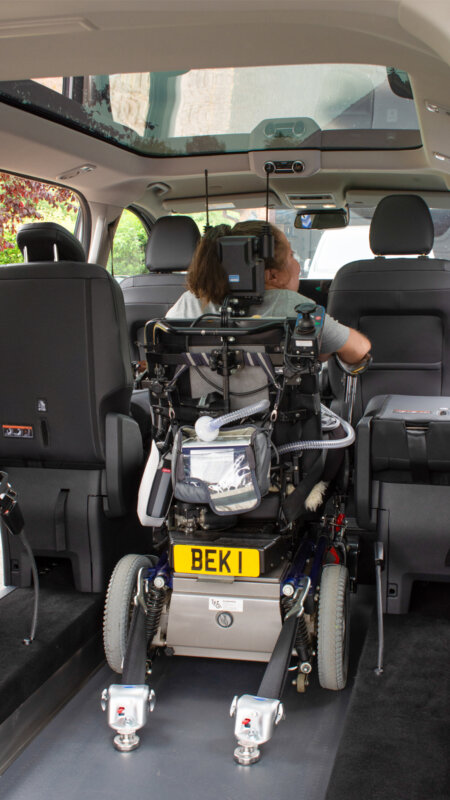
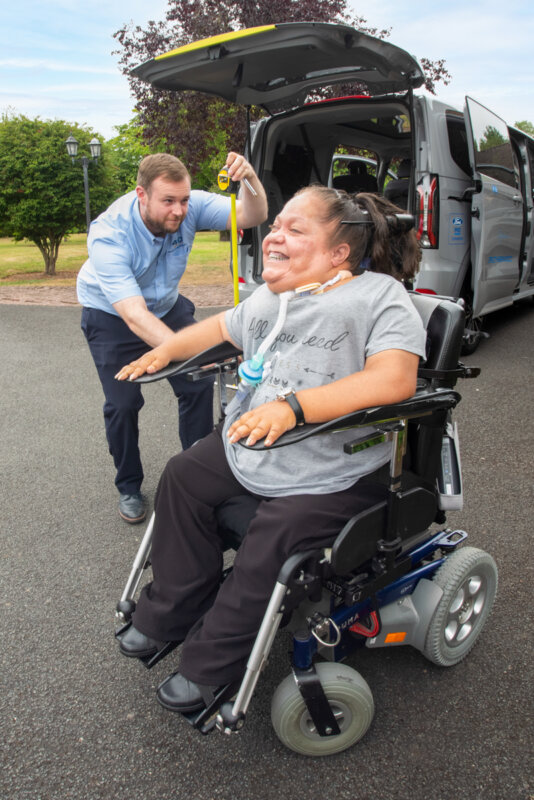
How to Measure the Seated Height of a Wheelchair User
So, with the wheelchair user sitting comfortably on a flat, level surface, use a tape measure to record the distance from the ground to the top of the wheelchair user’s head. Don’t be tempted to add an extra inch or two to be safe – as doing so could limit the choice of Wheelchair Accessible Vehicles recommended to you by your Brotherwood WAV Consultant.
With this information – whether in inches or centimetres – your Brotherwood WAV Consultant will be able to guide you through which vehicles from our accessible vehicle range will be suitable for you. They’ll check that you’ll be able to comfortably enter the WAV and be able to travel comfortably without feeling cramped. Crucially, they’ll also consider your eyeline – an often-overlooked issue for Wheelchair Accessible Vehicle users.
What is Outward Visibility?
The eyeline of the wheelchair user will dictate how much Outward Visibility the wheelchair user has out of the windows and windscreen while travelling. Being able to see clearly out of the vehicle creates a more comfortable, pleasant journey when compared to a view of the vehicle’s roof or interior.
Seeing further out of the vehicle can also help to reduce the sensation of speed and reduce travel sickness – important if you are planning on travelling further than just a few miles at a time.
Creating more Outward Visibility for the wheelchair user is just one benefit of a flat, level lowered floor conversion. To learn more, explore our range of Brotherwood Wheelchair Accessible Vehicles or contact us today to arrange your free, no-obligation home demonstration.

